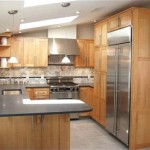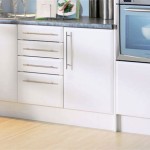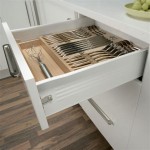Organizing Kitchen Cabinets for Optimal Food Storage
Efficient kitchen organization is essential for maintaining an effective and enjoyable cooking environment. A well-organized kitchen reduces food waste, saves time searching for ingredients, and contributes to overall kitchen hygiene. One of the most crucial aspects of kitchen organization is the strategic arrangement of food items within kitchen cabinets. This article provides a detailed guide to organizing kitchen cabinets for optimal food storage.
The process of organizing kitchen cabinets for food storage involves several key steps, starting with a thorough assessment of current organization and culminating in the implementation of a sustainable system. These steps include decluttering, categorizing food items, selecting appropriate storage solutions, arranging cabinets for accessibility and functionality, and establishing a routine for maintenance.
Decluttering and Inventory Management
The initial step in effective kitchen cabinet organization involves a complete decluttering of existing food items. This includes removing all contents from cabinets to assess what is currently stored and to identify expired or unwanted items. Expired food should be discarded immediately to prevent potential health risks and to free up valuable storage space.
A comprehensive inventory should be conducted to determine the quantity and types of food items being stored. This inventory will inform decisions regarding storage container needs and cabinet arrangement. Consider grouping similar items together during this inventory process, such as canned goods, baking supplies, and snacks. This preliminary categorization will streamline the subsequent organization process.
Pay close attention to expiration dates during the decluttering process. Many food items, especially pantry staples, may have expiration dates that have passed. Properly dispose of these items according to local regulations. For items nearing their expiration dates, consider prioritizing their use in upcoming meals to minimize waste. This can be facilitated by placing these items at the front of the cabinet or on a designated shelf.
Consider the shelf life of different food items. Items with shorter shelf lives should be stored in accessible locations to encourage their timely consumption. Conversely, items with longer shelf lives can be stored in less accessible locations, such as higher shelves or back corners of cabinets. This strategy helps to prevent food from expiring before it can be used.
During the decluttering process, also evaluate the packaging of food items. Bulky or irregularly shaped packaging can take up valuable storage space and make it difficult to organize cabinets efficiently. Consider transferring food items from their original packaging into more space-efficient containers. This can significantly improve the organization and accessibility of food items within kitchen cabinets.
Categorizing and Selecting Storage Solutions
Once the decluttering and inventory process is complete, the next step is to categorize food items into logical groups. Common categories include canned goods, grains and pasta, baking supplies, snacks, spices, and condiments. The specific categories will depend on individual dietary habits and cooking preferences. Establishing clear categories facilitates efficient storage and retrieval of food items.
Appropriate storage containers are essential for maintaining organized kitchen cabinets. A variety of container types are available, each suited for different food items and storage needs. Clear plastic containers are ideal for storing dry goods such as flour, sugar, pasta, and cereal. Clear containers allow for easy identification of contents and provide a visual cue for restocking.
Airtight containers are crucial for preserving the freshness of perishable food items and preventing spoilage. These containers create a barrier against moisture and air, which can contribute to food degradation. Examples of airtight containers include glass jars, plastic containers with tight-fitting lids, and vacuum-sealed bags. These containers are particularly useful for storing items such as coffee, tea, and spices.
Consider using stackable containers to maximize vertical space within kitchen cabinets. Stackable containers allow for efficient use of available space and can help to prevent clutter. Look for containers that are designed to nest inside one another when empty, which further optimizes storage space. These are especially helpful for items requiring bulk storage.
Specialized storage solutions can also be used to organize specific types of food items. For example, tiered spice racks are designed to organize spices in a compact and accessible manner. Can organizers are designed to store canned goods in an orderly fashion, allowing for easy rotation of stock. These specialized solutions can significantly improve the organization and accessibility of targeted food categories.
Labeling storage containers is crucial for maintaining a well-organized kitchen. Labels should clearly identify the contents of each container and may also include the expiration date. This helps to prevent confusion and ensures that food items are used before they expire. Use a label maker or write labels by hand using a permanent marker. Consider using different colored labels for different food categories to further enhance organization.
Arranging Cabinets for Accessibility and Functionality
Strategic arrangement of food items within kitchen cabinets is essential for creating an efficient and user-friendly kitchen. The principle of accessibility should guide the arrangement process, with frequently used items stored in easily accessible locations. This minimizes the time and effort required to retrieve these items during food preparation.
Items used on a daily basis, such as coffee, tea, and breakfast cereals, should be stored on lower shelves or in cabinets at eye level. This allows for convenient access to these items without requiring excessive reaching or bending. Consider storing these items near the preparation area, such as the coffee maker or breakfast counter, to further streamline the morning routine.
Less frequently used items, such as baking supplies and specialty ingredients, can be stored on higher shelves or in less accessible cabinets. These items are typically used less often and therefore do not require immediate access. Consider storing these items in the back of the cabinet or on a shelf that is slightly out of reach. This frees up prime storage space for more frequently used items.
Group similar items together within cabinets to maintain order and efficiency. For example, store all canned goods in the same cabinet or on the same shelf. Similarly, store all baking supplies together in a designated area. This prevents items from becoming scattered throughout the kitchen and makes it easier to find what is needed during food preparation.
Consider the weight of food items when arranging cabinets. Heavier items, such as canned goods and large bags of flour, should be stored on lower shelves to prevent the risk of injury from lifting heavy objects from high shelves. Lighter items, such as spices and snack foods, can be stored on higher shelves without posing a safety risk.
Utilize cabinet organizers to maximize space and improve accessibility. Shelf organizers can create additional vertical space within cabinets, allowing for more efficient storage of items. Drawer dividers can help to organize smaller items, such as spices and utensils, within drawers. These organizers can significantly improve the functionality and organization of kitchen cabinets.
Consider the proximity of food items to appliances and preparation areas. Store items used in conjunction with specific appliances near those appliances. For example, store coffee filters and sweetener near the coffee maker. Store flour, sugar, and baking powder near the mixing bowls and baking sheets. This minimizes the distance required to retrieve these items and streamlines the cooking process.
Take into account the natural light and temperature conditions within the kitchen. Avoid storing perishable food items in cabinets that are exposed to direct sunlight or excessive heat, as this can accelerate spoilage. Store these items in cooler, darker cabinets to prolong their shelf life. Consider using insulated containers to further protect perishable items from temperature fluctuations.
Maintaining Organized Food Storage
Maintaining organized kitchen cabinets requires a consistent effort and a commitment to establishing routines. Regular cleaning and restocking are essential for preventing clutter and ensuring that food items remain fresh and accessible. Incorporate these tasks into a regular cleaning schedule to maintain a well-organized kitchen.
Conduct a weekly or bi-weekly review of food items in cabinets. This involves checking expiration dates, identifying items that need to be restocked, and removing any expired or unwanted items. This regular review prevents food from expiring before it can be used and ensures that cabinets remain organized and efficient.
Restock food items promptly after use to prevent cabinets from becoming disorganized. After using an item, immediately return it to its designated storage location. This prevents items from accumulating on countertops or in other areas of the kitchen and helps to maintain an organized environment.
Clean cabinets regularly to remove dust, crumbs, and spills. Use a damp cloth to wipe down cabinet surfaces and shelves. Remove any sticky residue or food particles that may attract pests. Regular cleaning helps to prevent the buildup of dirt and grime and contributes to overall kitchen hygiene.
Establish a system for rotating food items. When restocking items, place newer items behind older items to ensure that older items are used first. This helps to prevent food from expiring before it can be used and minimizes food waste. This method is often referred to as "first-in, first-out" or FIFO.
Consider using a whiteboard or a digital list to track inventory levels and shopping needs. This helps to prevent overstocking and ensures that necessary items are always on hand. Update the list regularly as items are used and restocked. This system can also be used to track expiration dates and prioritize the use of items nearing their expiration.
Periodically evaluate the organization system and make adjustments as needed. As dietary habits and cooking preferences change, the organization system may need to be adapted. Evaluate the effectiveness of the current system and make adjustments to improve accessibility and efficiency. This ensures that the kitchen remains well-organized and functional over time.

How To Organize Kitchen Cabinets

Organizing Our New Kitchen S Cabinets Young House Love

26 Brilliant Ideas For Organizing Kitchen Cabinets Choice Cabinet

Pin On Kitchen

20 Genius Kitchen Cabinet Organization Ideas A Cultivated Nest

How To Organize Your Pantry Step By Project The Container

How To Organize Kitchen Cabinets And Drawers For Good

How To Organize A Pantry Best Organizers And Tips 2024

How To Organize Your Kitchen Cabinets In 3 Simple Steps Practical Perfection
21 Ways To Organize Kitchen Cabinets Declutter








